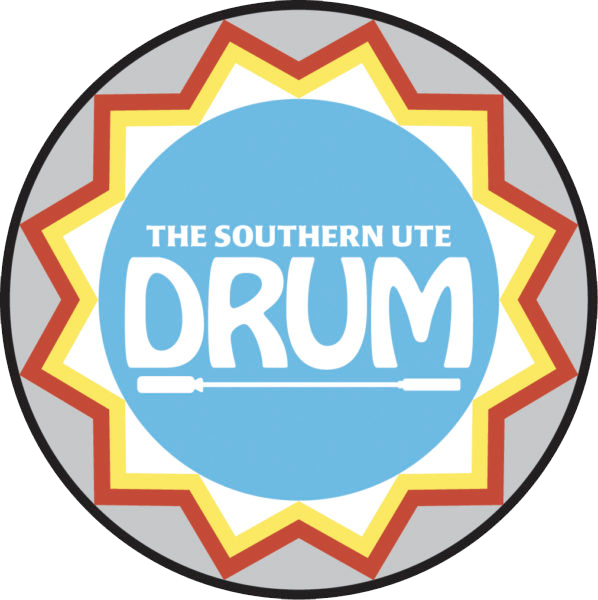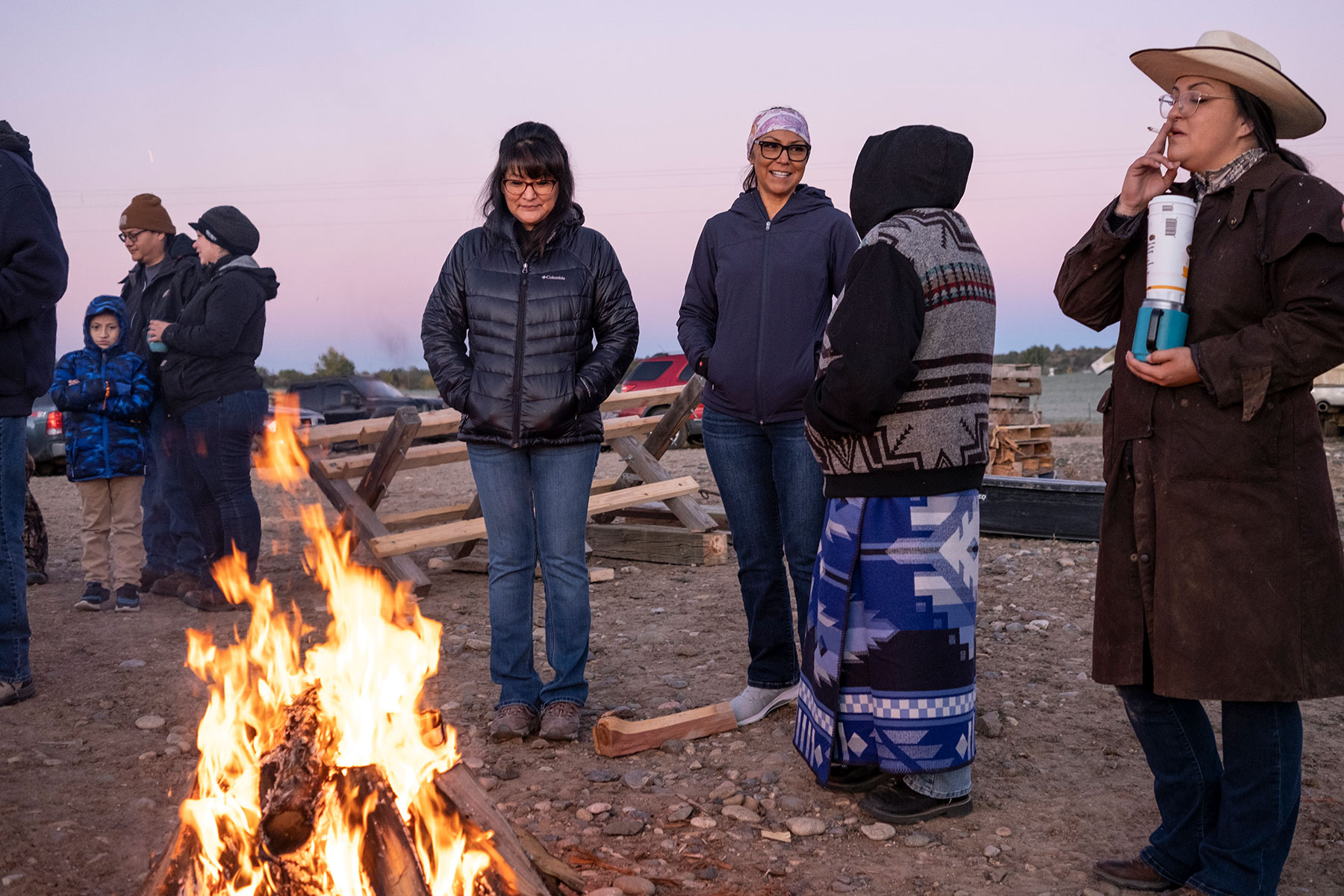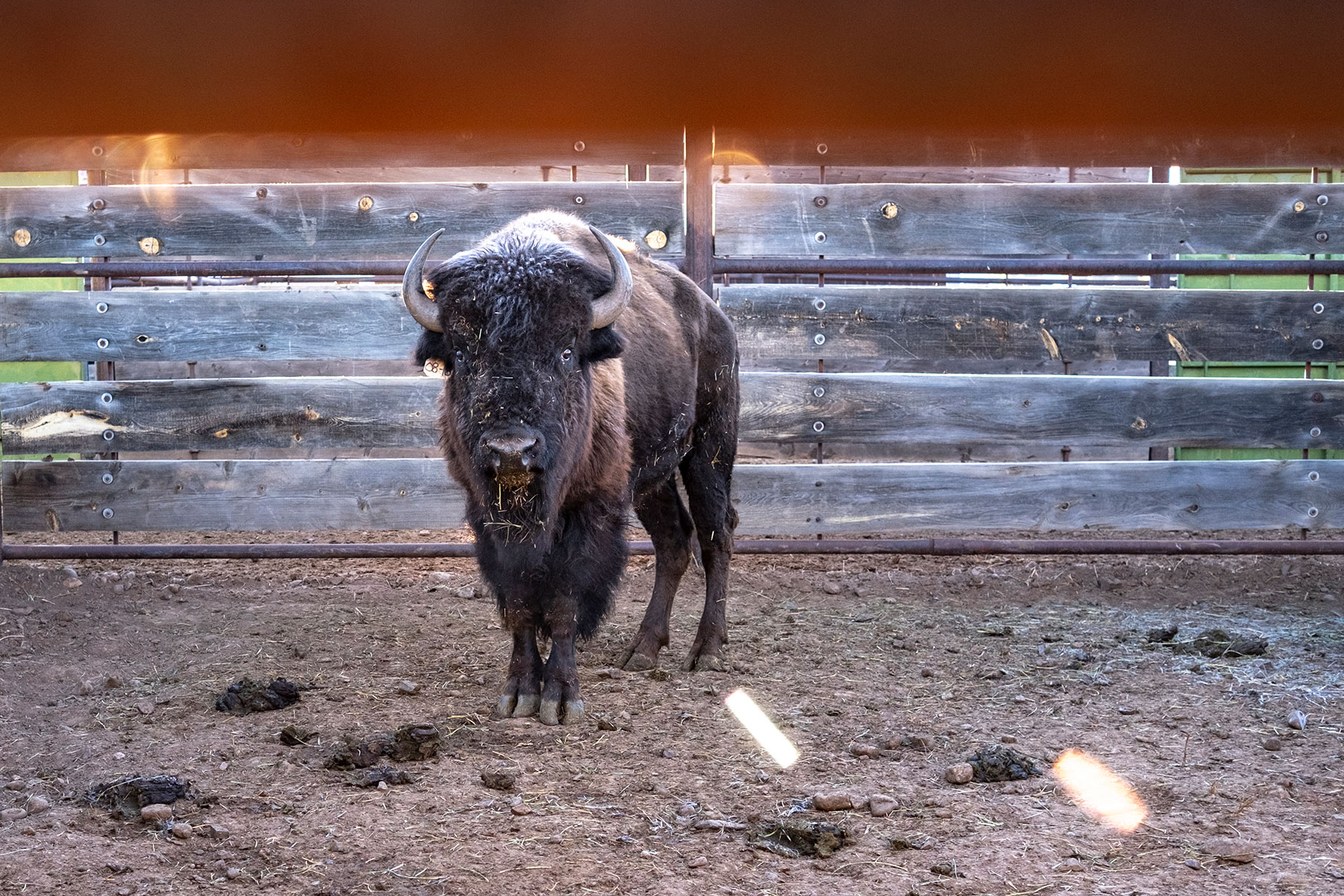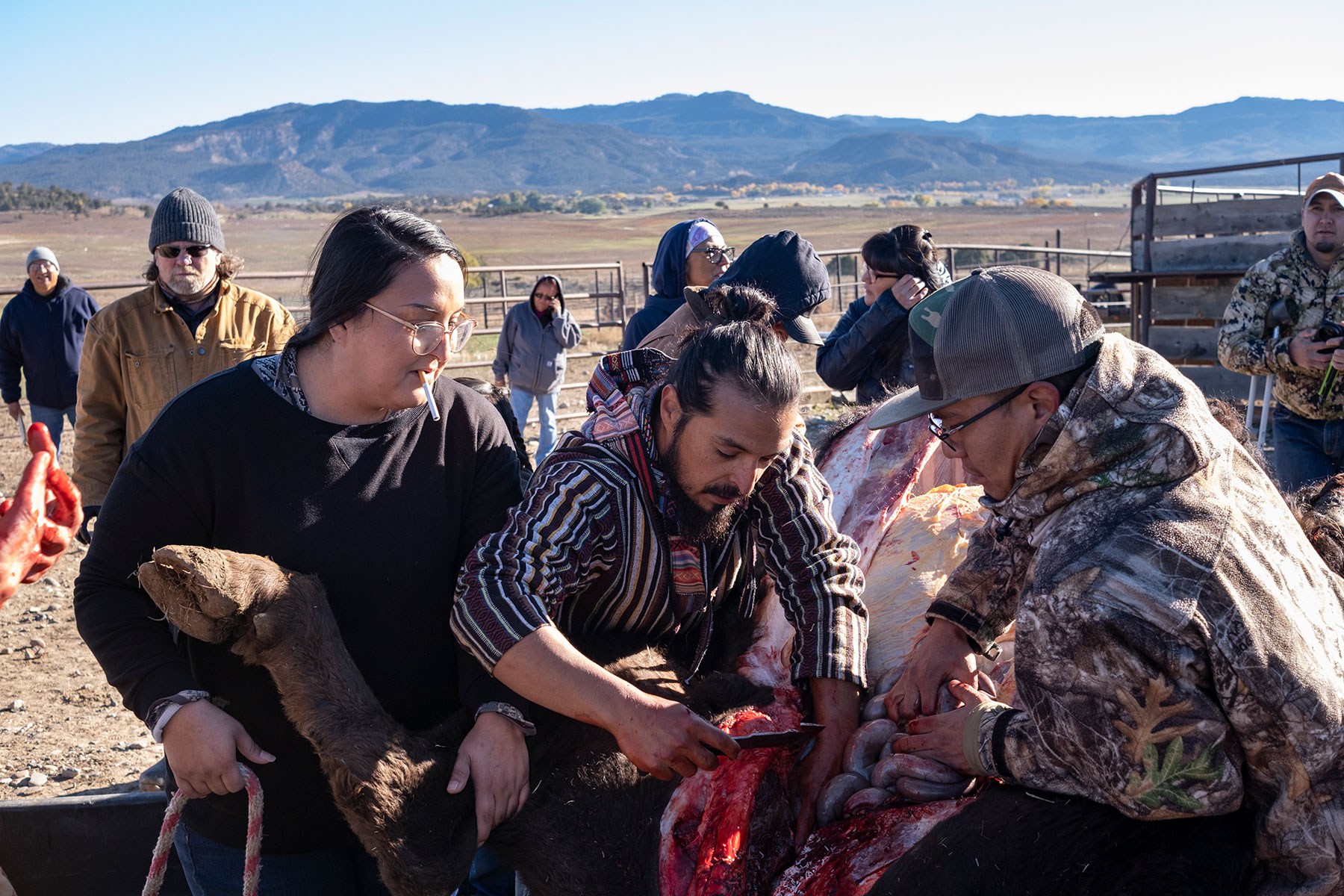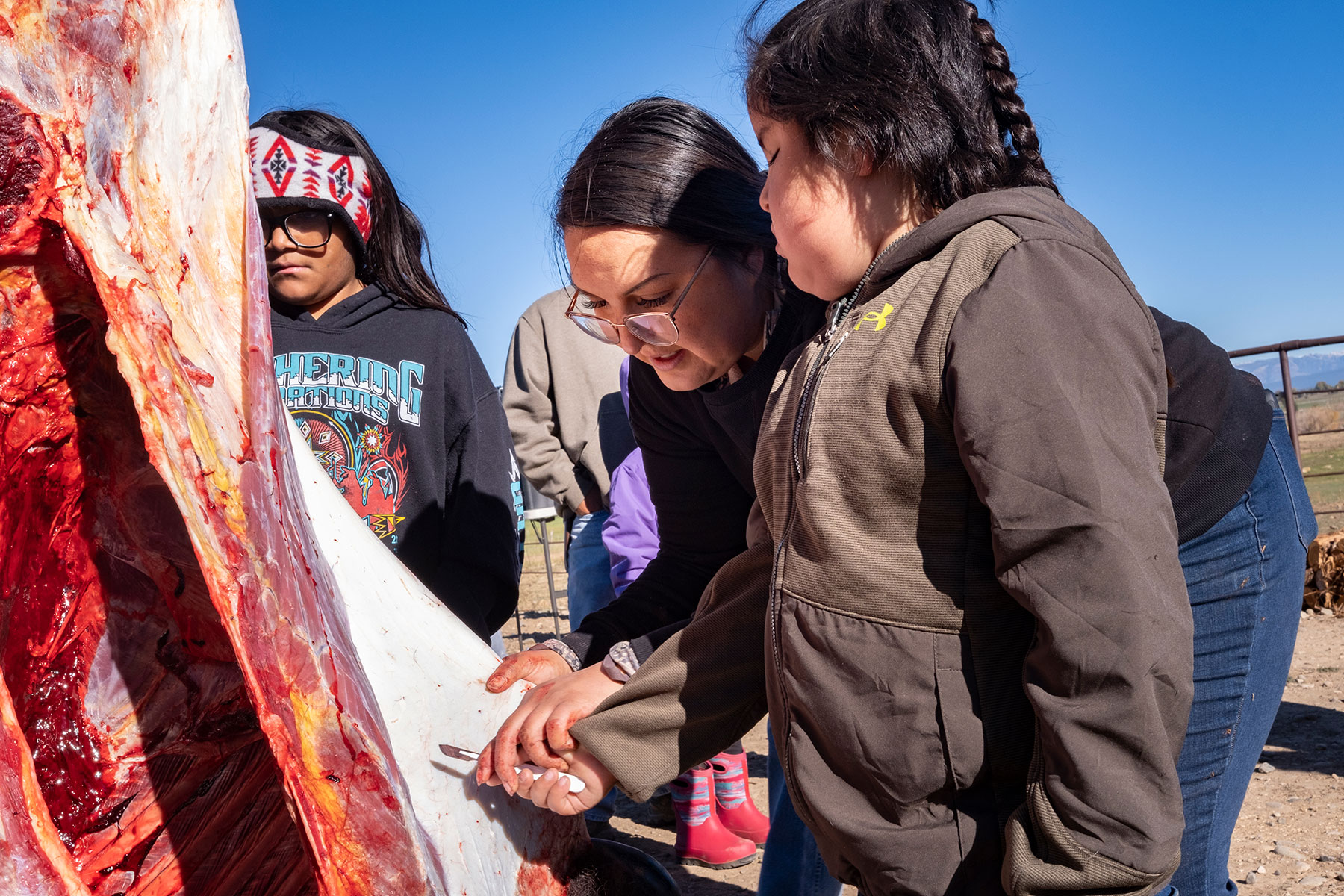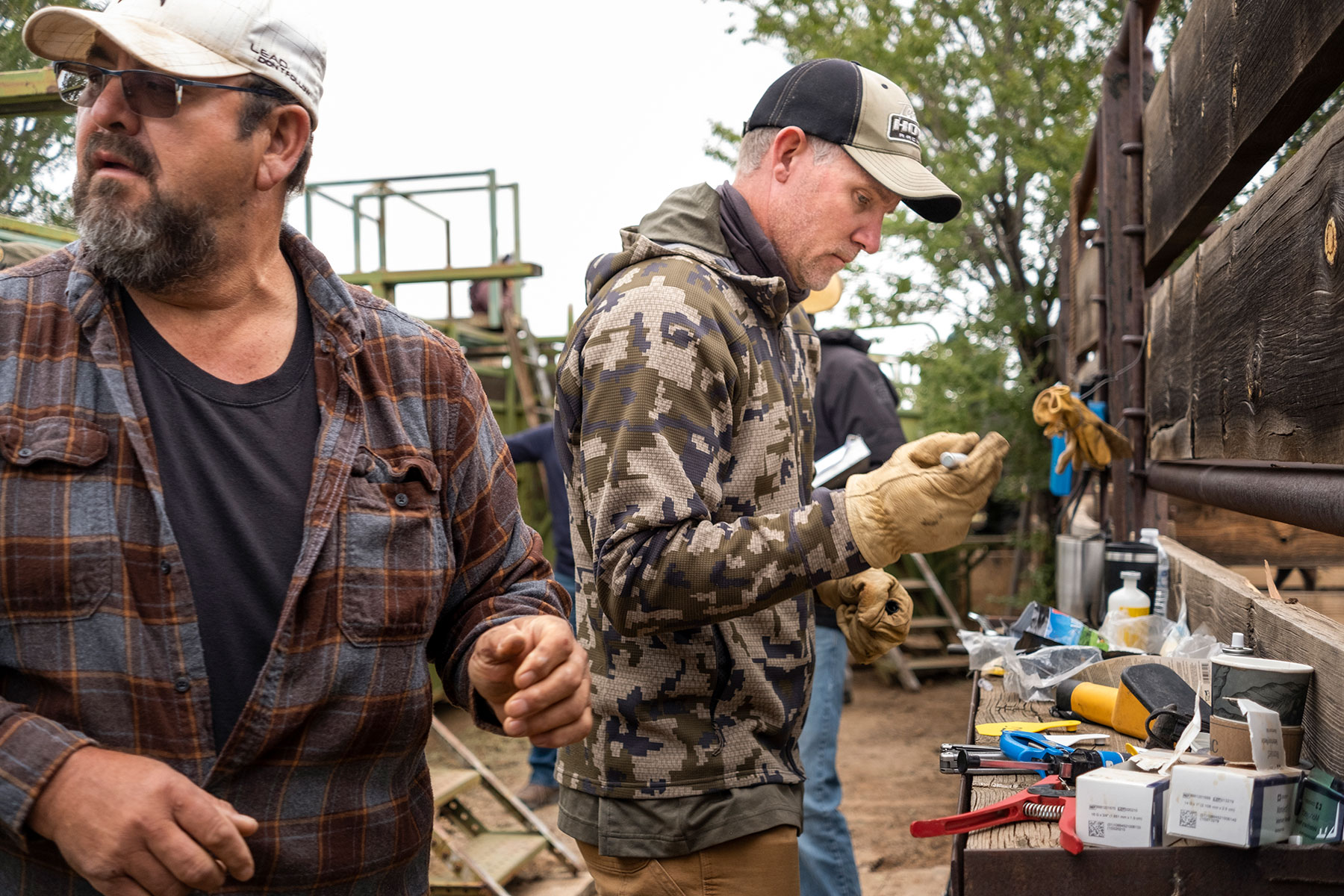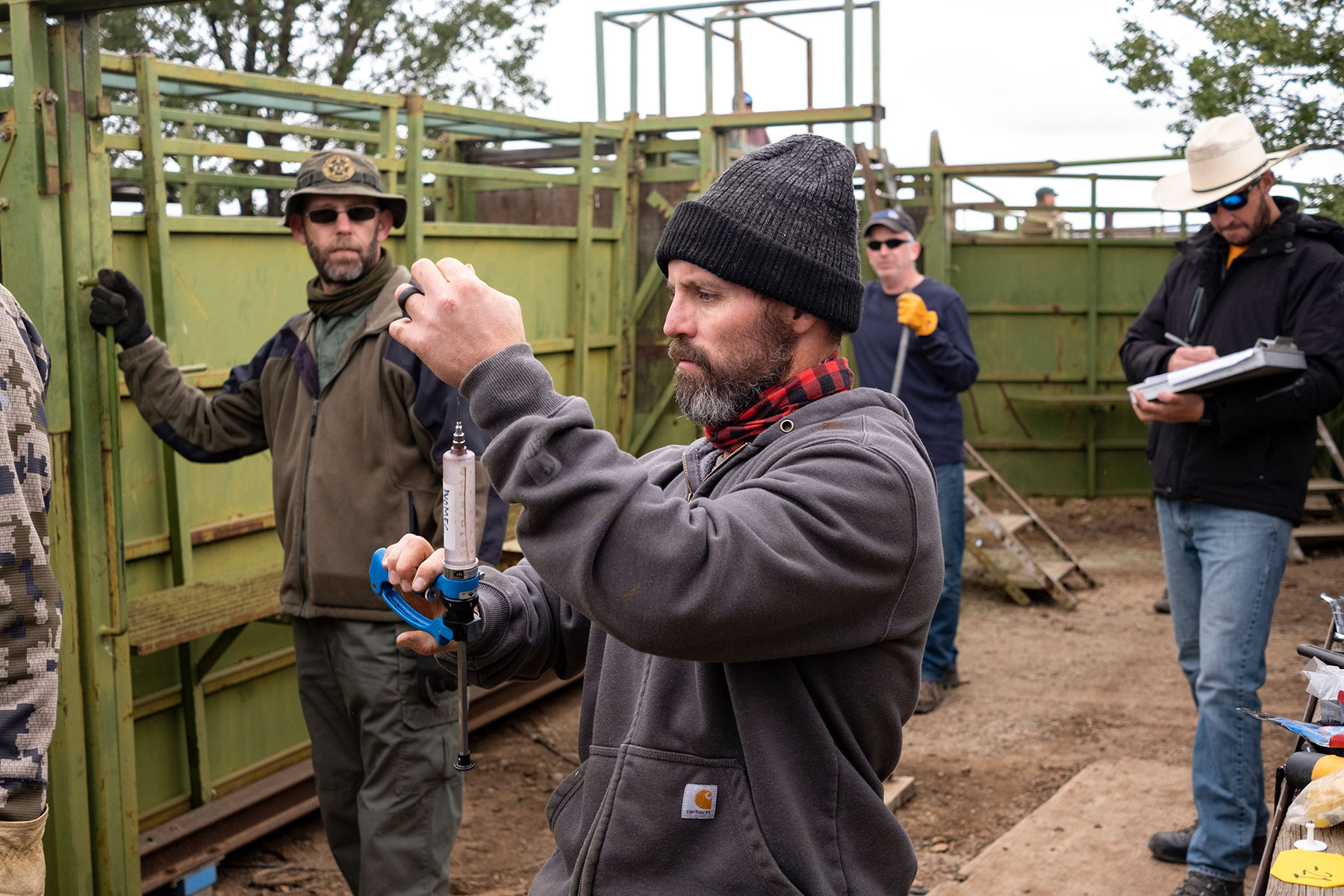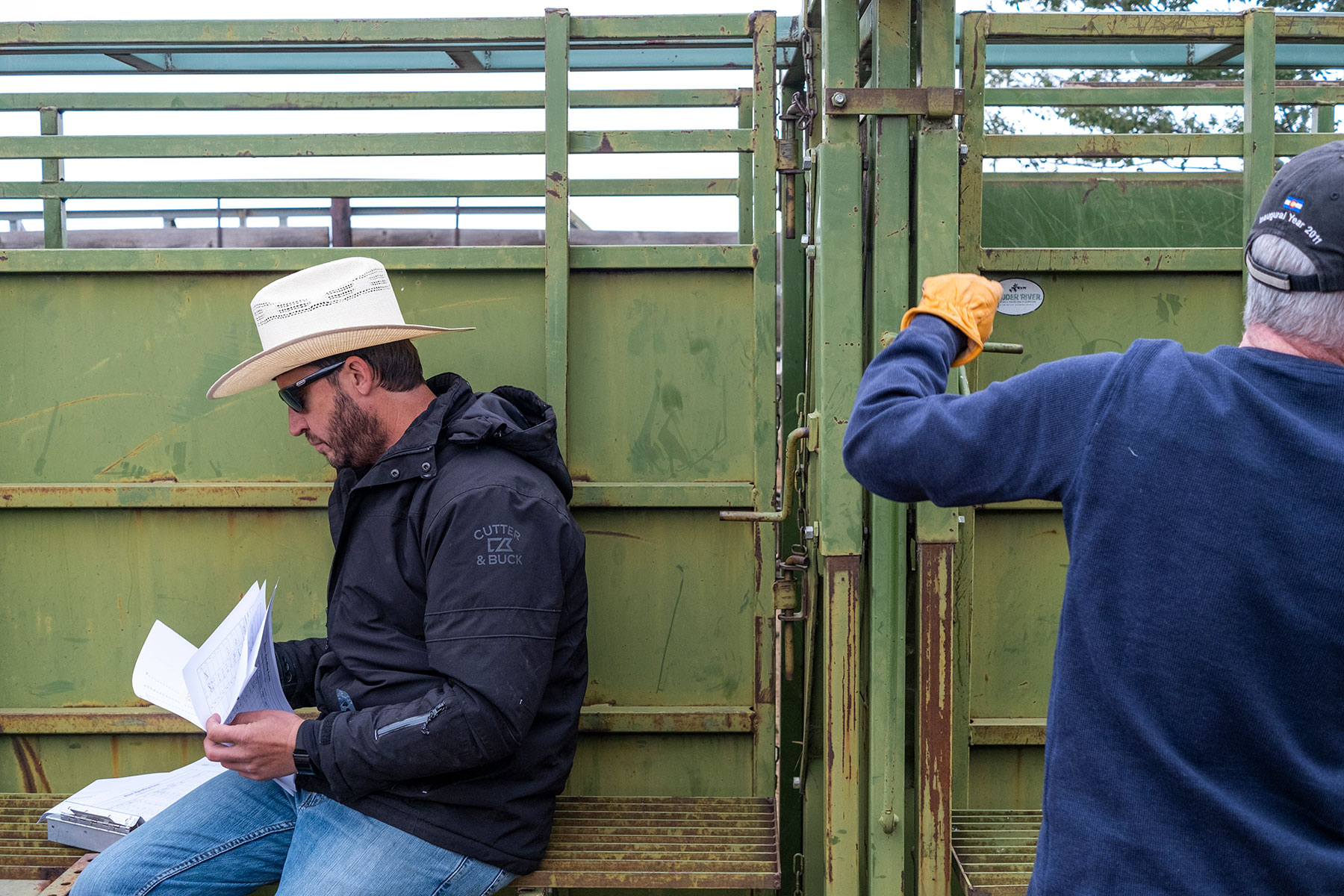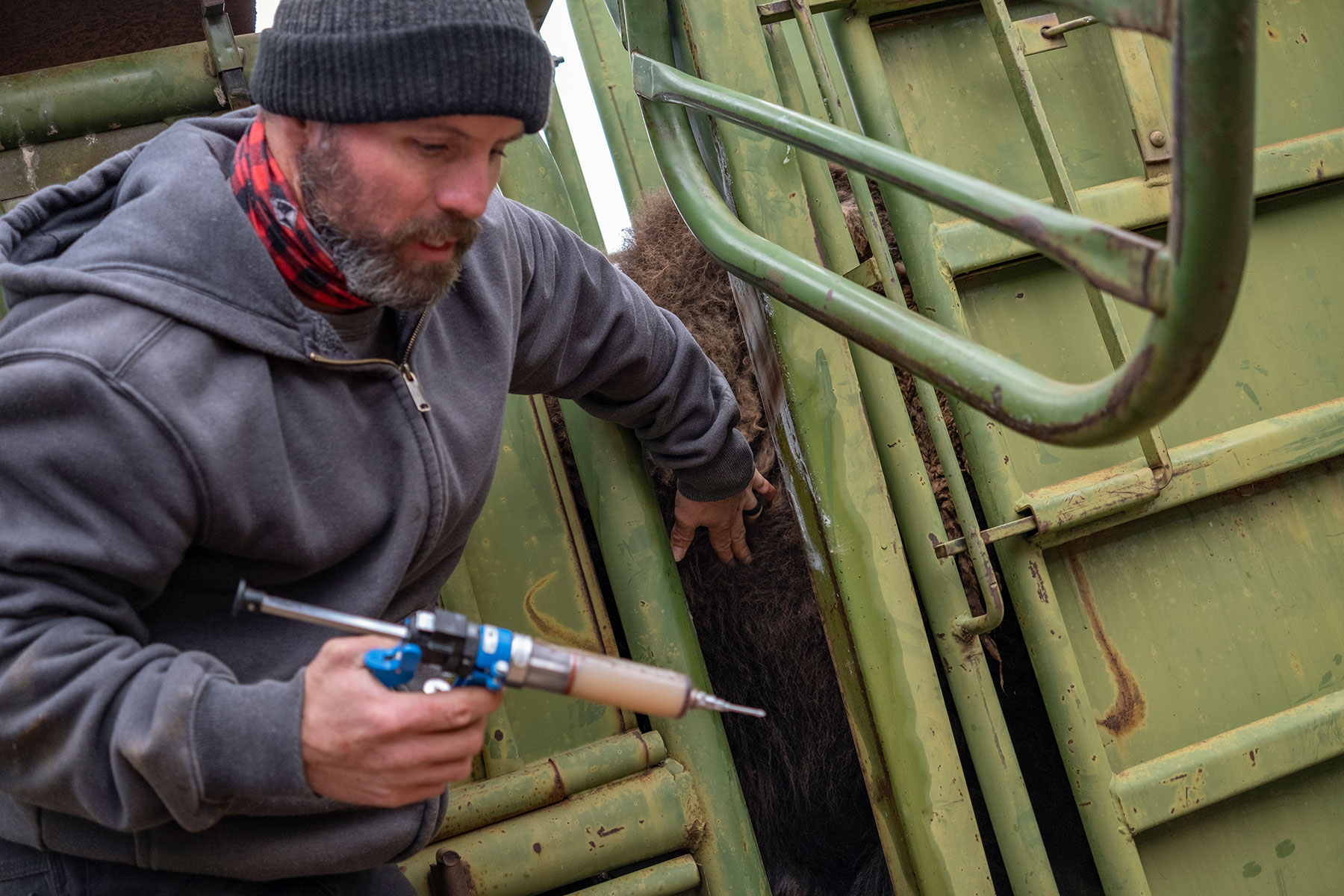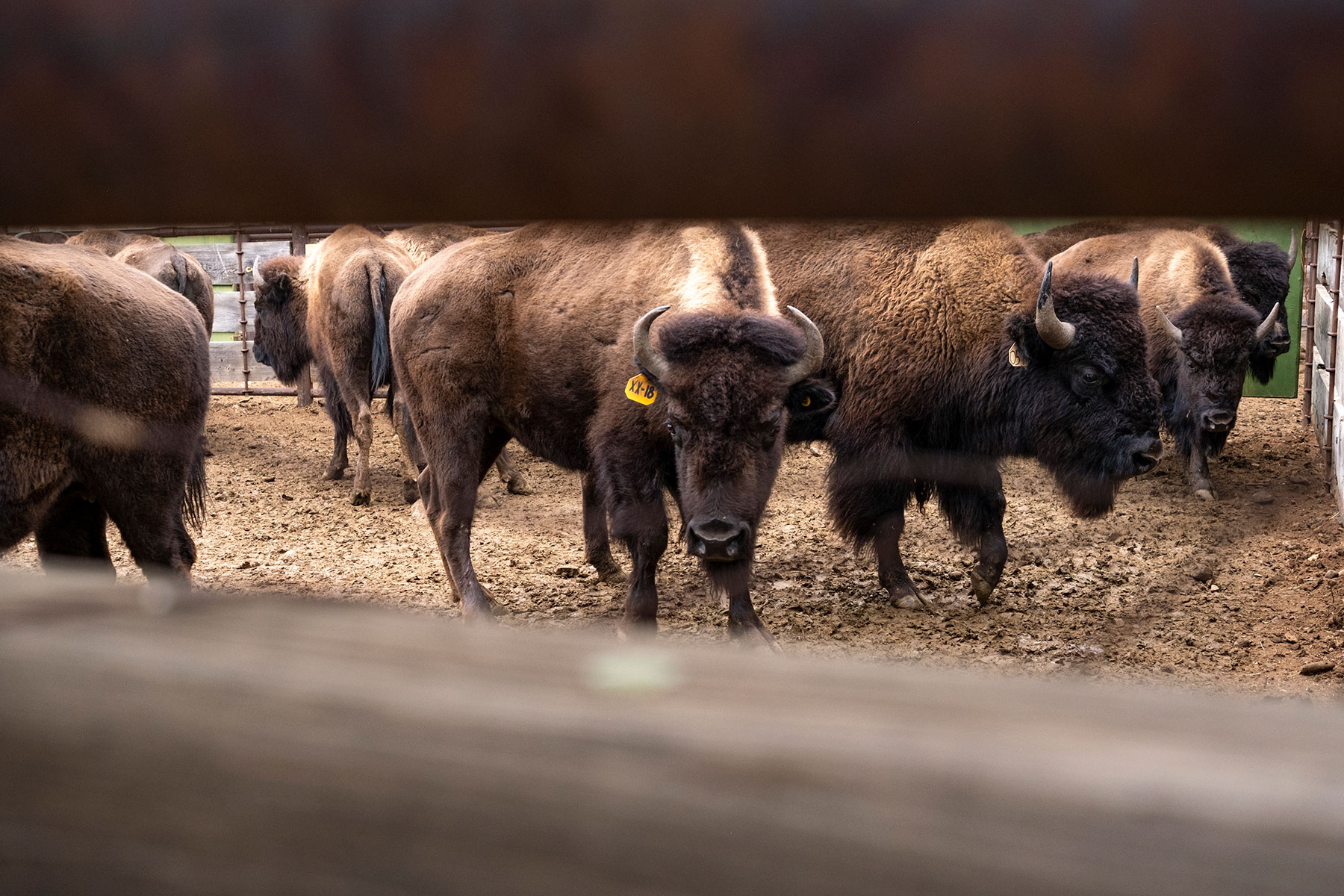Seasonal roundup keeps bison herd healthy









Bull selected for harvest, field dressing
Shortly after sunrise, on Saturday morning, Wildlife Bison Herd Manager Jesse Lasater unlatched the heavy doors that secured the holding pin, where the two-year-old bull bison stood. Soft sunlight now reached into the wooden paddock; puffs of steam escaping from the animal’s muzzle with each breath. Soon the crisp morning frost would begin the inevitable melting process that comes with the waking of most autumn days. The large bison approached Jesse inquisitively, yet the two knew each other well. It sniffed at the mans gloved hands, then licked his leather palm. In that moment, Jesse made his peace with this sacred animal, before letting it out to an enclosed pasture. The time had come to harvest this bull.
The sound of hand drums, accompanied by the signing of Ute songs, welcomed the sunrise that morning. Songs passed down from the elders. Songs to honor the bison. Southern Ute elder, Hanley Frost gave a blessing and a prayer for the people. Freshly split cedar burned in a well-kept campfire. Children accompanied their parents and elders, still sleepy from the night before.
Three days earlier, the Southern Ute Wildlife Division held their annual Bison roundup, at the very same location. Carefully pulling each buffalo from the herd, for yearly vaccinations and tagging. One bison was selected that day and separated from the herd for harvest. Not just any harvest, but a field dressing workshop, a chance to learn and experience first-hand, what the hunting and cleaning process entails for large game in order to properly process the meat and tan the hide.
“He was by no means the biggest bull, historically speaking, but he was the herd bull — the biggest male, and oldest, most dominate male of the herd,” explained Lasater “If we can control how many of the males are breeding, we can maintain that ratio of being a more female dominate herd — so, we chose to harvest a two-year-old bull this year. A majority of the ones we harvest for the membership, are younger bulls, which yield tender meat.”
To keep the herd healthy animals are brought in for an annual checkup, the Southern Ute Wildlife biologists pull the weights of the animals to make sure they are healthy. They try to doctor and maintain the animals, checking for any sign of physical trauma. They also use this opportunity to add ear tags for tracking, identifying females and males each year that are born in the spring. This year, the Tribe’s bison were rounded up on Wednesday, Oct. 13.
“Essentially every year we try to hold a bison roundup for the health of the herd,” Lasater said.
The bison program uses those stats from the annual roundup to maintain the herd, also addressing the needs of the membership — such as an increasing demand for processed bison meat, tanned hides, while also harvesting other cultural aspects from the buffalo.
“Going along with that, the management [of the herd], we worked on 107 animals this week,” Lasater said. “We don’t give animals selected for harvest any of the injections for their wellbeing and mental health, it’s best to only interact with them that one day of the year. The rest of the time they are out there being bison, living normal lives out in the pasture — these are one hundred percent grass fed bison. They only eat hay and grass, these are very healthy animals, the meat that is going to the tribal membership is also very healthy.”
“When I came on it was end of Nov. 2015, my first day was the roundup for that year,” Lasater stated. “I got to participate in the roundup, and we had 33 animals in the herd at that time. It was a long-term goal to get the herd up to the number it is today — to be able to process enough animals to keep meat available to the membership year-round.”
The first year that Lasater took over as the Bison Program Manager, the program purchased 11 females, since that time they have grown the herd through breeding. To get the herd to its current size, there has been a lot of work expanding the pastures and increasing hay production. The bison pasture is now comprised of 350 acres of tribal land. “We put up our own hay for them as well, that’s a big part of the summer job — cutting and bailing hay,” Lasater said. “It’s rewarding because you can see your progress, whether is increasing the herd size, or increasing the hay production.”
The Tribe is a member of the Inter-tribal Buffalo Council, which allows them to apply for grant funding. The grants provide for the processing of animals, hide tanning and taxidermy of skulls — usually European mount, those are made available to the membership, through the Southern Ute Culture Department.
“My view of the program is that it serves two very important purposes for the Tribe and the membership, one is a nutritional benefit, the bison meat provides a healthy alternative that tribal members can turn to for their diets,” Southern Ute Wildlife Division Head Steve Whiteman said. “The health aspects of bison meat are well known, a healthy substitute to beef. The purpose of the program is to have an ongoing source of heathy, nutritional meat.”
“The other is cultural preservation, a connection which many Native Americans, including Utes, have to bison. There is definitely a traditional and spiritual connection with the bison, the Utes took to buffalo when they gained access to horses in the 17th Century, enabling them to hunt buffalo. There is a cultural significance and meaning — in my understanding, that the bison is a very strong, resilient animal, able to endure tremendous hardship and survive the toughest of circumstances — it’s a symbol of resilience.”
Saturday’s buffalo harvest was an acknowledgment of that cultural connection. Following the sunrise blessing, the young bull gave itself over to the membership. Southern Ute Wildlife biologists, Danielle Austin and Aran Johnson took the lead on field dressing the animal, while encouraging community participation in the step-by-step demonstration. Young hands helped to skin the massive animal, while parents and elders helped to guide the process, lending their own experience — some learning new skills for themselves.
Once the bison was dressed, and the hide removed, Southern Ute Wildlife delivered it to Pagosa Springs, to finishing the processing of the meat for the membership.
“We did do a workshop like this in the past and it was very well received, and we thought it was time to do it again” Whiteman emphasized. “We’re very much interested in getting tribal youth educated in hunting, and knowing how to hunt, what the tools are and how to field dress an animal. This workshop is a big priority for getting that youth involvement here on their reservation lands, honoring pastimes.”
